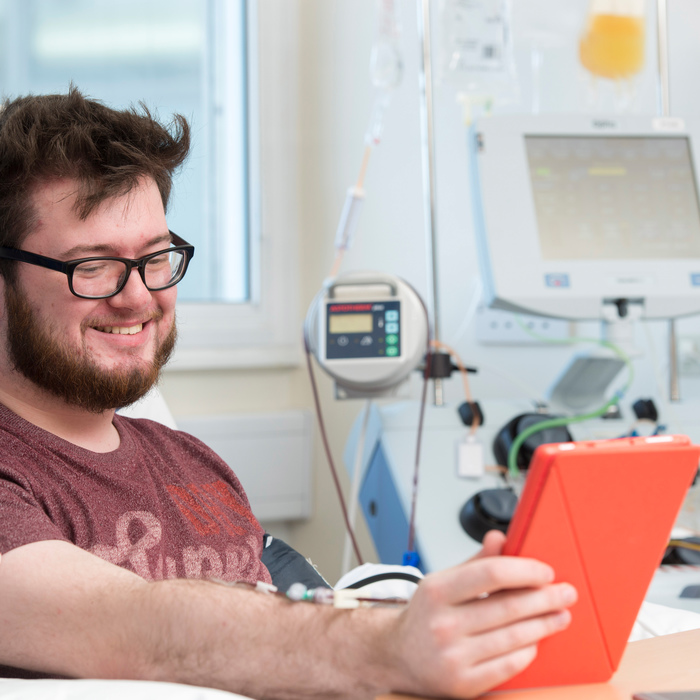What happens when you're matched
It is rare to be found as a match – the overwhelming majority of donors will never be contacted.
So if you do get the call, consider yourself lucky as you may get the chance to save someone's life.
Next steps if you're found as a potential match
Step one
We'll need to run some more tests to assess your suitability for donation. These will either be on the sample you already gave when you donated blood, or we'll ask for some new blood samples from you.
This will help us find out if you are the best possible match for the patient.
Step two
We will ask a few questions about your health and lifestyle and ask you to complete a Donation Safety Check form, exactly the same as when you give blood. This is to make sure the donation is safe for you and the patient.
Step three
If you are the best possible match, we will ask you to come into one of our specialist centres for a full medical check-up.
This will include:
- questions about your medical history
- a chest x-ray
- an electrocardiogram (ECG) to make sure your heart is healthy
- giving some more blood samples to check you're OK to donate
Step four
If you're OK to donate, we'll be in touch to arrange your donation.

Contact us
If we have been in contact with you to say that you are a potential donor, please email British.Registry@nhsbt.nhs.uk.
If you are thinking of joining the NHS Stem Cell Donor Registry, you can do so when you next give blood, or at the same time as your first donation.
Read our advice about joining the NHS Stem Cell Donor Registry

